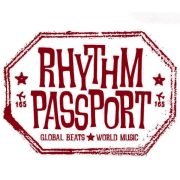Whether it be called kwaze les 8, kontredans, or bal violon, Haiti’s contra-dance tradition is for the most part unknown by the world at large. Most focus either on the blackness or the poverty of the island, without realising Haitian culture shares plenty of similarities with Europe’s culture, though with the 17th and 18th European century more than anything else.
The liberator of Haiti, Jean Jacques Dessalines, declared himself emperor. His Haiti was an empire. When not wearing a red scarf around his neck in honour of Ogoun, god of warriors, while at war, he was dressed in the style of military and other garments that could also be found on Europe’s generals. He was a lover of music and of dance. According to historian Jean Fouchard, not only did he have an orchestra of forty musicians, but he also protected some of the theatres in the colony from destruction during the war for Haiti’s independence. It was during this first empire of two years, until his assassination in 1806, that Haiti’s musical culture was founded. He personally promoted “caribinier” (a type of soldier) music that became merengue music, and then the now all-popular konpa and still danced as karabinye in Vodou music. His reign was a great one for contra-dance.
The music of the First Empire soon was eclipsed by the living that neo-colonial regimes that came after the empire, especially Jean-Pierre Boyer’s, promoted. Polkas, waltzes, a lesser version of the native merengue only at the end of a ball when all were sweaty and ready to leave, replaced the music of the First Empire.
Some of these traditions continue to exist today as folk music, and one of them is the contra-dance beloved during the First Empire, unchanged. Bal Kontredans Violon Léogane is a group that plays traditional contra-dance in the south of Haiti. The city of Leogane is where Empress Marie Claire Heureuse was born, the emperor’s beloved wife who is understood to be the person who invented the soupe joumou that Haitians consume on the first of January, the day of Haiti’s independence. It is supposed to be the perfect soup for a soldier.
We spoke to the group about their music…
How would you explain your band?
“We play a music that we inherited. Some call it kwoze les 8 and others call it bal violon. Others call it kontradans“.
Why do folks like it?
“It’s a mystical experience“.
Mystical? Is this Vodou music? Are you serving spirits?
“No, not mystical in that sense. We play to celebrate a spirit or for a death, like a libera. In vodou music, you have to offer something to the spirit”.
What’s the makeup of your band?
“We play with six musicians. Two basses up top, one bass for the bottom, one drummer (drum is named deboch), one major flute, and one director. When we have dancers, we have four women, four men. The major flute sings the contra-dance’s instructions”.
Is there a clothing element to this tradition?
“No, we wear whatever we’d like”.
What are some of the obstacles that you face as a group?
“Well, getting to popularize our music. We would like to travel around as a band”.
How old is this tradition?
“It seems to be as old as this country itself”.
https://www.youtube.com/watch?v=hJ3k2fa5Xsk
Is it easy getting people interested in your music?
“Locally speaking we are part of a tradition, but nationally it is. There is not much music like ours, if not any, on the radio”.
Do you feel like you have been pushed aside as a musical genre?
“We certainly are playing an aspect of Haitian culture that has been left in the shadows. We definitely do not get the adequate support needed to thrive by our society.
Thank you for answering my questions.
“Thank you for the interview. We hope that it allows our music to reach a wider audience”.


